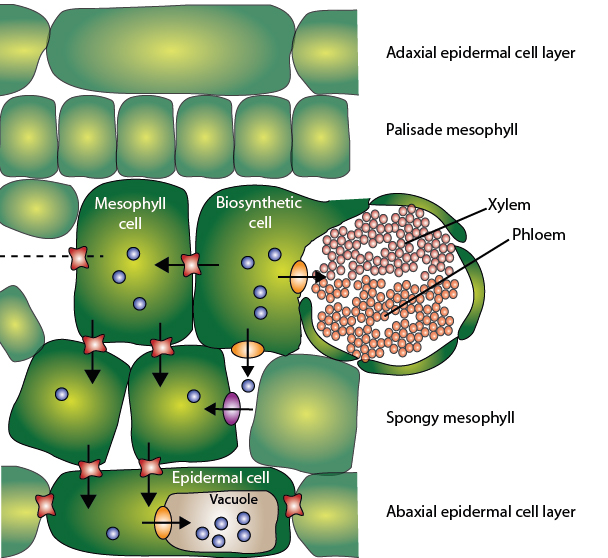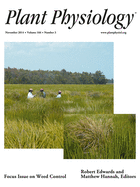DynaMo researchers publish model of leaf margin defence
Svend Roesen Madsen, Hussam Nour-Eldin and Barbara Ann Halkier publish a paper in Plant Physiology where they elucidate the role of transport processes in leaf glucosinolate distribution.
Arabidopsis has developed a strategy to defend its leaves against herbivores by accumulating glucosinolates along the margin of its leaves, where there is no synthesis.
Transport mechanisms regulate plant defence
It is generally assumed that the glucosinolates are synthesized along the vasculature in the leaf, which suggests that the accumulation at the leaf margin is established through regulated transport, although little is known about the transport mechanisms.
The DynaMo Center's identification of the two plasma membrane-localized glucosinolate importers, GTR1 and GTR2 (published in Nature, August 2012), provided molecular tools to investigate the role of transport processes in establishing the glucosinolate distribution in leaves.
A model for how glucosinolates accumulate in the leaf

The DynaMo researchers' schematic illustration of how glucosinolates might be transported within a leaf.
In a newly published paper in Plant Physiology, a group of DynaMo researchers show - through leaf apoplastic fluid analysis and glucosinolate feeding experiments - that the two glucosinolate transporters, GTR1 and GTR2, which are essential for long-distance transport of glucosinolates in Arabidopsis, also play key roles in glucosinolate allocation within a mature leaf by effectively importing apoplastically localized glucosinolates into appropriate cells.
Detection of glucosinolates in root xylem sap unambiguously shows that this transport route is involved in root-to-shoot glucosinolate allocation. Detailed leaf dissections show that in the absence of GTR1 and GTR2 transport activity, glucosinolates accumulate predominantly in leaf margins and leaf tips. Furthermore, the DynaMo researchers show that glucosinolates accumulate in the leaf abaxial epidermis in a GTR-independent manner.
Based on their results, they propose a model for how glucosinolates accumulate in the leaf margin and epidermis, which includes symplasmic movement through plasmodesmata, coupled with the activity of putative vacuolar glucosinolate importers in these peripheral cell layers.
Related News
Contact
Head of Center Professor Barbara Ann Halkier
DynaMo Center
Department of Plant and Environmental Sciences
University of Copenhagen
bah@plen.ku.dk
+45 35333342
The publication

Madsen, S. R., Olsen, C. E., Nour-Eldin, H. H., Halkier, B. A.: Elucidating the role of transport processes in leaf glucosinolate distribution. Plant Physiol, 166:1450-62, 2014.
